France can be proud of being the first country that fully embraced the electronic upheaval that took place in Germany, especially in the Berlin area at the end of the 1960's. While still an experimental country in the sense of music perception, it was the extended use of the pioneering technologies from their neighbours that coined the term progressive electronic and the artists that brought them in the studio and on stage. As a genre, it gained its popularity in the second part of the 1970's not only in the land of wines and sophisticated cuisine but everywhere in the world.
 Heldon were coming from Paris and were possibly the most musically diversed band mentioned in this article and surely one of the most talented in terms of songs' progression. While the main genre was progressive electronic, the band indulged in exploring fields such as progressive rock with experimental touches and acoustic concepts.
Heldon were coming from Paris and were possibly the most musically diversed band mentioned in this article and surely one of the most talented in terms of songs' progression. While the main genre was progressive electronic, the band indulged in exploring fields such as progressive rock with experimental touches and acoustic concepts. Their first album Electronique Guerilla came out in 1974 containing mostly keyboard sounds with a lot of electric guitar phrasing intervals. The albums that followed were more or less in the same vein, notably Allez Teia (Αλετεια) (1975), Agneta Nilsson (1976) and Interface (1977) but their most acclaimed release was also their last. Stand By, came out in 1979 displaying a Berlin-School influence with the opening track, Bolero, which is spread all over the first side in eight parts. The two songs that formed side 2 on the vinyl are an interesting observation in progressive rock music.
We need to mention the band Ose, formed by two members of Heldon, multi-instrumentalist Richard Pinhas and the drummer Francois Auger who, along with Herve Picart, released one album in 1978 called Adonia. It proved to be one of the best electronic stuff ever produced in the country, although standard sounding and on the safe side, with little experimentation being brought out.
 We are staying in Paris to meet Pole, led by Paul Putti. Their albums were both released in 1975, namely Kotrill and Inside the Dream. Widely experimental in nature, and maybe ahead of their time, the band itself got the name from the record company Paul Putti established.
We are staying in Paris to meet Pole, led by Paul Putti. Their albums were both released in 1975, namely Kotrill and Inside the Dream. Widely experimental in nature, and maybe ahead of their time, the band itself got the name from the record company Paul Putti established. While Kotrill was mainly a one man's project and an uncommon listening experience, Inside The Dream was a collaboration of musicians adding acoustic guitars, thus making the result much more interesting and varied.
Pierre Salkazanov or Zalkazanov or as imprinted on the vinyl covers, Zanov, is the composer of two albums in the 70s, albums of pure Berlin-influenced school of electronic music. He found a measure of fame in 1976 when the debut Green Ray was released with the three lengthy songs across the grooves, that pay tribute to the already prominent artists from the aformentioned city.
Next year's Moebius 256 301 maintained the same approach in its five songs but we find a finer quality in them and the sequencer is used more frequently which is obviously a good thing! In particular, the 18 minutes song An Zero is a masterpiece of electronic music, in general.
Zed, from Grenoble, recorded its only album at the dawn of the decade, in 1979, called Visions of Dune. The man behind the band is Bernard Szajner who generates all the sounds coming from keyboards and sequencers.
The album, which took the inspiration from Frank Herbert's novel Dune, is a great example of progressive electronic music with avant-garde sections implanted in it. It is devided into two sections, the first and second vision, that respectively make use of the vinyl sides. Bernard Szajner continued making albums in the 80s using his real name before changing the band's name to Z in the recent years.
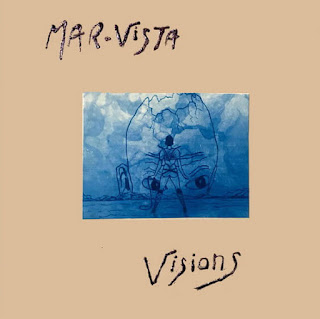
Richard Pinhas' first album, Rhizosphere, is your standard everyday progressive electronic dose. Already a member of Heldon and Ose, he released in 1977, it uses all the effects in equal share and serves perfectly its instrumental nature. The artist spawned two more efforts, Chronolyse in 1978 and Iceland in 1979, with the songs Paul Atreides from the former and Greenland from the latter, being the highlights.
Patrick Vian comes from Angouleme and his only album Bruits Et Temps Analogues is a mix between electronic and rock music and probably a little inconsistent but still an enjoyable listen.
Grosse Nacht Musik could have been in any album of his contemporary German artists.
Another artist who drew attention to the scene is Didier Bocquet with his albums Eclipse (1977) and Voyage Cerebral (1979). Influenced by Klaus Schulze, these two efforts contained a huge synth festival with repetitive rhythms very reminiscent, also, of the later works of Tangerine Dream.
Following the same patterns as their above fellow musician, Spacecraft were another example of a band with only one album in their agenda. Paradoxe was available to the public in 1978, accomodating fine electronic music in the context of quality and atmosphere.
Space Art was a band with a peculiar style and its two albums in the 70s, the self titled in 1977 and Trip in the Center Head in 1978 can easily confirm this. Consisting of Dominique Perrier on all keyboards and Roger Rizzitelli behind the drum kit, the most notable element here is the soundtrack mood they breed, especially for a giallo movie! The songs can be individually absorbed, unlike in most of the other cases on this tribute.
The last artists presented here are Jean-Michel Jarre and Vangelis, the most renowned composers from the genre and albums such as Oxygene (1976) and Equinoxe (1978) as well as Heaven and Hell (1975), Albedo 0.39 (1976) and Spiral (1977) helped to pave the way for world recognition and commercial success.


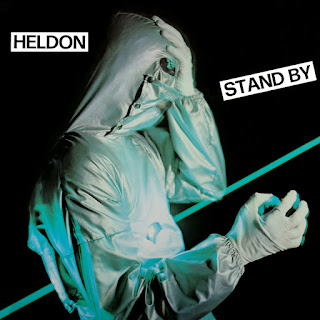

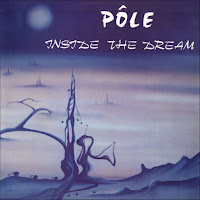

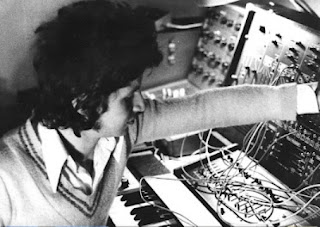

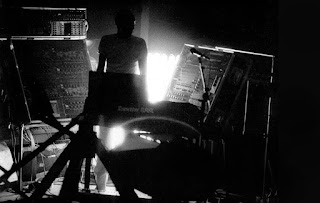


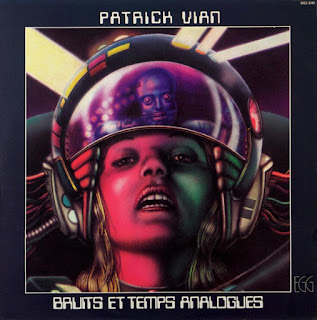





No comments:
Post a Comment